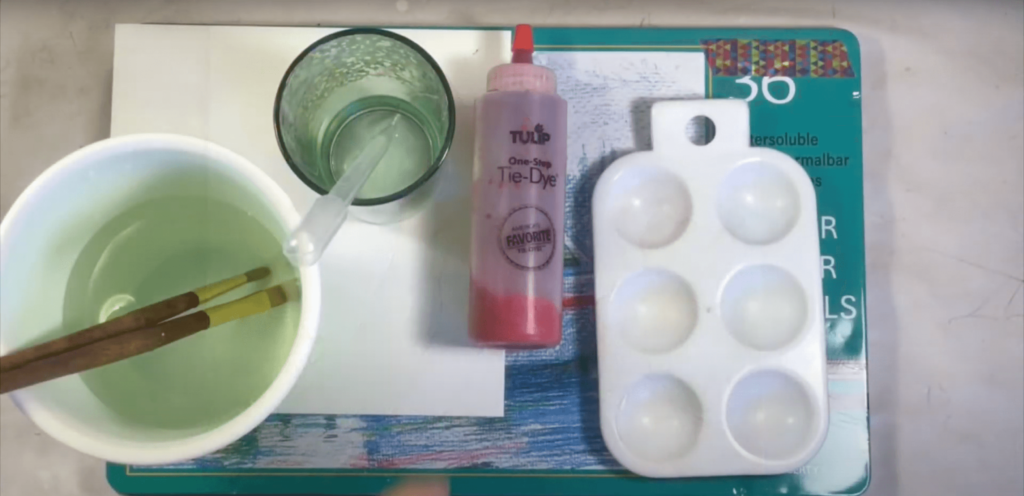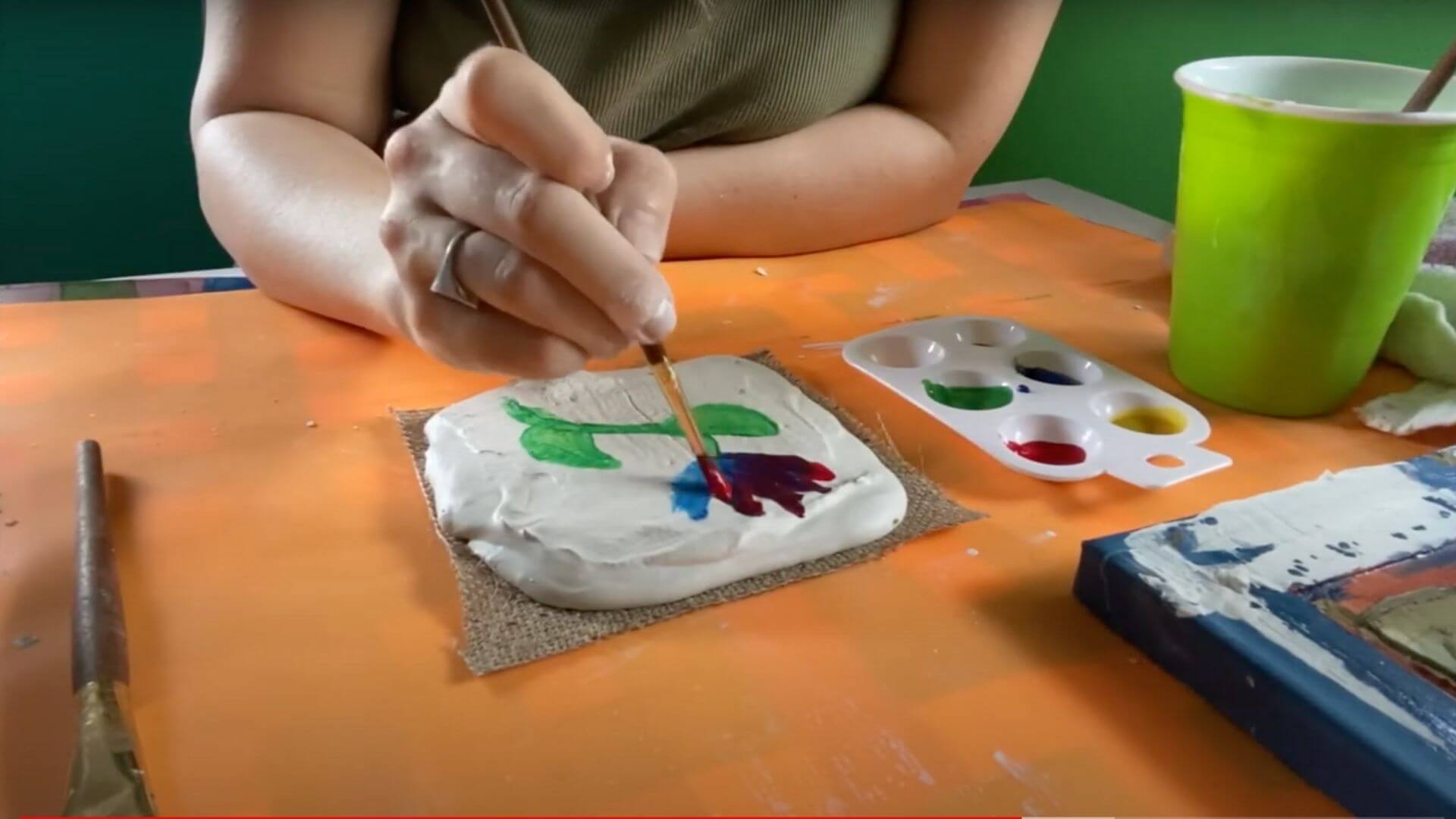Using science and creativity, these painting techniques for kids to try will elicit a reaction from your friends and your art!
1,941 years ago, a catastrophic event occurred in Pompeii, a city on the Italian peninsula. A volcano called Mount Vesuvius erupted and covered the whole city in ash!
The site was lost for centuries and remained almost entirely untouched until 1748. Today, scientific research brings to light the extraordinary history and culture of Pompeii and the Roman world. Learn how to create a fizzing work of art or a Buon Fresco with these Roman- inspired painting techniques for kids to try.
Using the DIY baking soda paint you just created, you can now make an erupting volcano painting!
Materials you will need:
- Red or orange baking soda paint
*Learn how to make your own here! - A tray or a small container to put the baking soda paint in
- A small cup
- A dropper (if you do not have on you can use drips from your paintbrush)
- White vinegar (you can add pigment to the vinegar, but it is not necessary)
- A cup of water
- A paintbrush or two
- Watercolor or mixed media paper -Watercolor pencils or paint (colored pencils or markers will work too, but not crayon)

Follow along with the video or the steps below to try this painting technique!
Directions:
- Step One: Draw your volcano. A volcano is a mountain that lets magma or molten rock escape from under the Earth’s crust to the surface where it comes out as lava. The molten rock makes its way up the main vent of the volcano. Some volcanoes have side vents where lava will flow out the side instead of the top. At the top of the volcano is the crater, this is where most of the lava will come out, sometimes it flows and sometimes there’s a big eruption. Not all volcanoes erupt with lava, some, like Mount Vesuvius erupt with ash, but our painting today will have lava. Right not we are just drawing the mountain that will be our volcano.
- Step Two: Fill in the background. I added plants and the sun and made the sky blue. When you are done with this step the whole scene should be complete, except the lava. In Pompeii there were marketplaces, houses, courtyards, and bathhouses- you can add some of them to your scene too!
- Step Three: For watercolor pencils, this step turns the pencil marks into paint. Dip your paintbrush in clean water and paint on the pencil marks with the water, you will see the marks turn into paint. Make sure to rinse your brush between colors.
- Step Four: This step adds your lava! Use a clean brush and your baking soda paint. The paint will be a little chunky because the baking soda doesn’t dissolve. Paint your lava on your volcano.
- Step Five: Watch your volcano erupt! Using the dropper, drip the vinegar one drop at a time onto your lava. What happens? A little goes a long way, take your time and watch it bubble and flow. When the vinegar touches the baking soda, it starts a chemical reaction. The chemical reaction releases a gas and creates the bubbles you see. Once you’ve watched your eruption, leave your painting in the same spot to dry- moving it will make the lava drip off the page.
Learn more!
- Were you inspired by your baking soda painting technique? Try creating a Buon Fresco, a popular art technique common in Ancient Rome!
- If you want to learn more about volcanoes and Pompeii follow the links below:
- https://www.natgeokids.com/uk/discover/geography/physical-geography/volcano-facts/
- https://kids.nationalgeographic.com/explore/history/pompeii/
Students from UCF CREATE Lake Eola Charter School will participate in the Pompeii program where they will learn the science of how frescos are created and work collaboratively to create fresco paintings.
